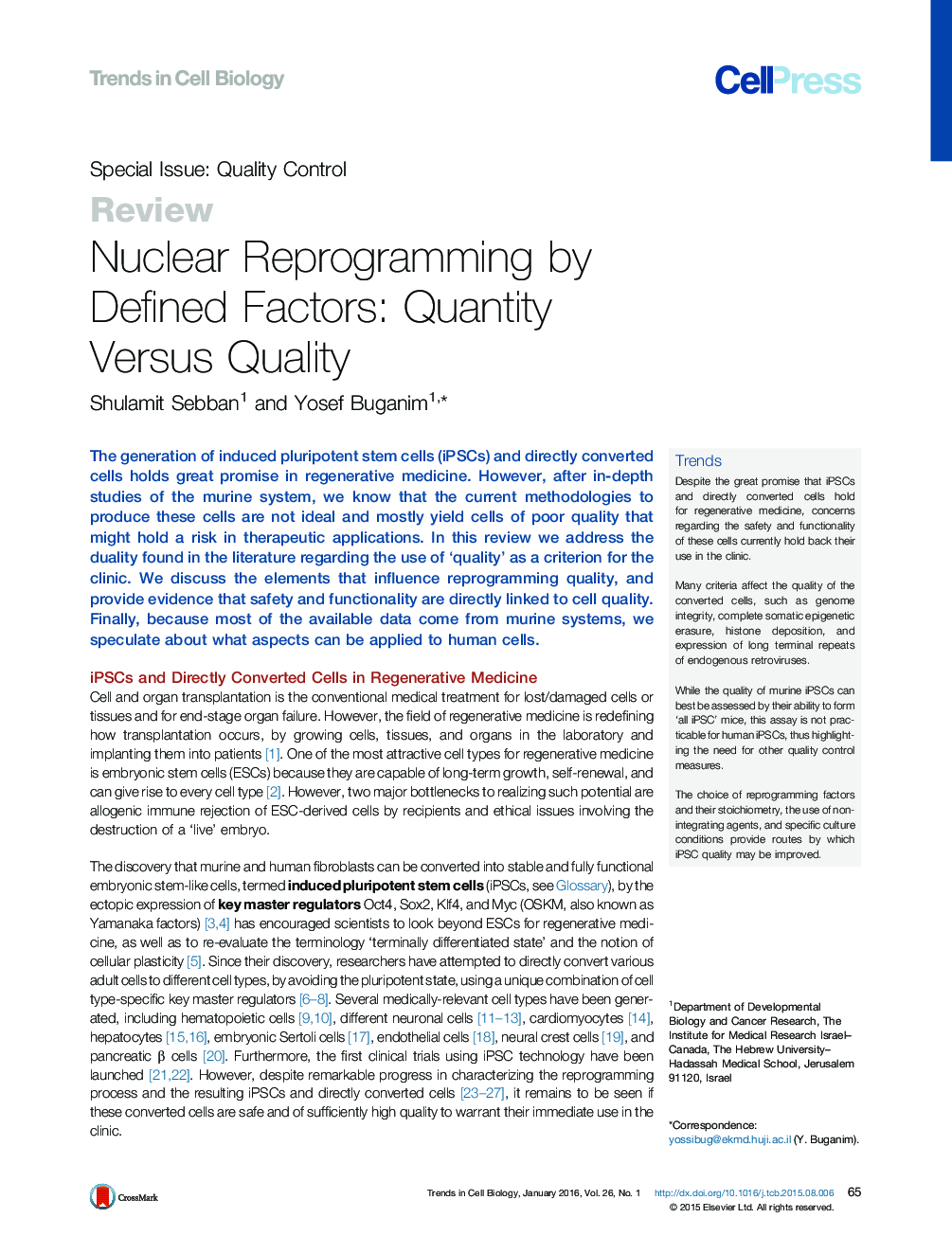| Article ID | Journal | Published Year | Pages | File Type |
|---|---|---|---|---|
| 2204330 | Trends in Cell Biology | 2016 | 11 Pages |
The generation of induced pluripotent stem cells (iPSCs) and directly converted cells holds great promise in regenerative medicine. However, after in-depth studies of the murine system, we know that the current methodologies to produce these cells are not ideal and mostly yield cells of poor quality that might hold a risk in therapeutic applications. In this review we address the duality found in the literature regarding the use of ‘quality’ as a criterion for the clinic. We discuss the elements that influence reprogramming quality, and provide evidence that safety and functionality are directly linked to cell quality. Finally, because most of the available data come from murine systems, we speculate about what aspects can be applied to human cells.
TrendsDespite the great promise that iPSCs and directly converted cells hold for regenerative medicine, concerns regarding the safety and functionality of these cells currently hold back their use in the clinic.Many criteria affect the quality of the converted cells, such as genome integrity, complete somatic epigenetic erasure, histone deposition, and expression of long terminal repeats of endogenous retroviruses.While the quality of murine iPSCs can best be assessed by their ability to form ‘all iPSC’ mice, this assay is not practicable for human iPSCs, thus highlighting the need for other quality control measures.The choice of reprogramming factors and their stoichiometry, the use of non-integrating agents, and specific culture conditions provide routes by which iPSC quality may be improved.
